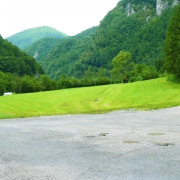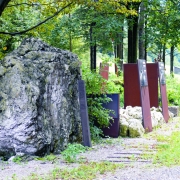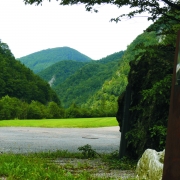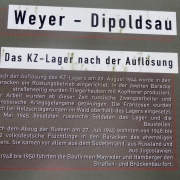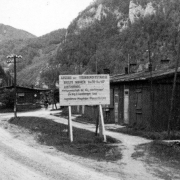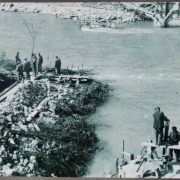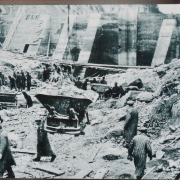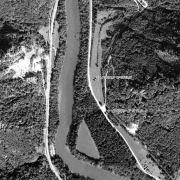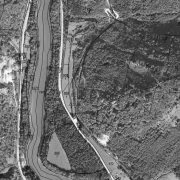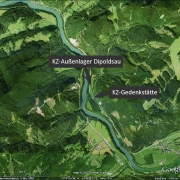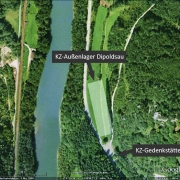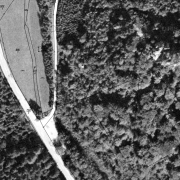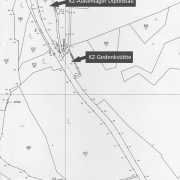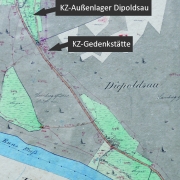Satellite Camp Dipoldsau
Gründung des Konzentrationslagers
Dipoldsau Subcamp was established in July 1943. Between January and the summer of 1943, prisoners were transferred to Küpfern from Großraming Concentration Camp by train. After building Dipoldsau Concentration Camp, the 130 prisoners were herded to the work sites like cattle.
Lokalisierung
The subcamp was located between Großraming and Weyer, in the district of former Weyer-Land. It consisted of ten living quarters and was set up north of the Enns river's edge. The so-called “Baron-Schacher", a small piece of woodland, separated the camp area from the two barracks that accommodated the SS guards.
Informationen über die Häftlinge
The number of prisoners at Dipoldsau Subcamp was around 130. In 1944, 22 of the prisoners, who are known by name, were killed. The actual number of victims is assumed to be twice that number.
Zwangsarbeit
The prisoners had to work in the containment zone of the Großraming power plant, which was being constructed at the time, and also in raising the Eisenstraße road. Moreover, they were put to work in a marble quarry in Großraming and at the construction site of a train station and a raft lift. One of the longest distances the prisoners had to travel to get to the work sites was four kilometres to the gorge wall, also called “Türkenmauer” in Großraming. There, they had to extract bright marble from the wall, which was needed for road, wall, and bridge building. The initial course of Eisenstraße road, which had led along Enns river, had to be raised due to the impoundment for the Großraming power plant. Otherwise, the road would have flooded. Near Angelsbach bridge, the prisoners built a supporting wall for the new Eisenstraße road. It was there that, according to survivors, prisoners who died in work accidents were simply encased in concrete.
Bewachung
There is no information on the guard of the camp.
Schließung
Dipoldsau Subcamp was shut down on 29 August 1944. After the shutdown, a small arms factory was set up in the barracks. In April 1945, many Hungarian Jews died in the area of former Dipoldsau camp, on their march to Mauthausen.
Gedenken und Erinnern
In 1988, the Weyer parish put up a large memorial stone near the former camp to commemorate it and the death march of the Hungarian Jews in April 1945. In 1988, a small local initiative was formed too, who put up the information boards. The group works in close cooperation with the Mauthausen Committee Austria and has been organising annual memorial ceremonies since 2001. The exact dates can be found in the programme for commemoration and liberation ceremonies.
In 2005, a new memorial site was established by the Mauthausen Association Dipoldsau. Numerous photographs, maps, and texts are exhibited in English and Hebrew. The 22 victims who were known by name are also commemorated.

